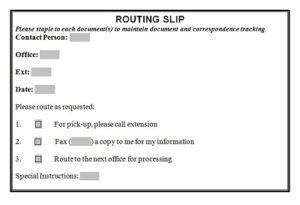
Get started by reading through the documentation.
 Fully-supported, widely-adopted, a complete end-to-end solution. Observability via Open Telemetry (OTEL). Write once, then deploy using RabbitMQ, Azure Service Bus, and Amazon SQS. Routing Slip Eventsĭuring routing slip execution, events are published when the routing slip completes or faults.MassTransit provides a developer-focused, modern platform for creating distributed applications without complexity. It should be pointed out that if the address for the first activity is invalid or cannot be reached, an exception will be thrown by the Execute method. Execute ( routingSlip ) Copy to clipboard To specify an explicit activity argument, specify the argument value while adding the activity using the routing slip builder.Īwait bus. Implicitly mapped arguments, added as variables to the routing slip. Explicitly declared arguments, added to the itinerary with the activity. The argument properties are mapped, by name, to the argument type from the routing slip using: When the routing slip is received by an activity host, the argument type is used to read data from the routing slip and deliver it to the activity. Activity ArgumentsĮach activity declares an activity argument type, which must be an interface. Since activities are application specific, and the business logic to determine which activities to execute and in what order is part of the application domain, the details are left to the application developer. Managing the inventory of available activities, as well as their names and execution addresses, is the responsibility of the application and is not part of the MassTransit Courier. The activities added to the routing slip are combined into an Itinerary, which is the list of activities to be executed, and stored in the routing slip. For each activity, arguments can be specified that are stored and presented to the activity via the activity arguments interface type specify by the first argument of the IActivity interface. The execution address is where the routing slip should be sent to execute the activity. Build () Copy to clipboardĮach activity requires a name for display purposes and a URI specifying the execution address. AddVariable ( " WorkPath ", \dfs\work " ) var routingSlip = builder. AddActivity ( " FilterImage ", new Uri ( " rabbitmq://localhost/execute_filterimage " )) builder. To create an activity, create a class that implements the IActivity interface.Īsync Task Execute ( ExecuteContext execution ) ) builder. In MassTransit Courier, an Activity refers to a processing step that can be added to a routing slip. For example, an activity that holds a seat for a patron could release the held seat when compensated. In addition to the basic routing slip pattern, MassTransit also supports compensations which allow activities to store execution data so that reversible operations can be undone, using either a traditional rollback mechanism or by applying an offsetting operation. Combining the routing slip pattern with a saga state machine results in a reliable, recoverable, and supportable approach for coordinating and monitoring message processing across multiple services. Leveraging a durable messaging transport and the advanced saga features of MassTransit, routing slips provide a powerful set of components to simplify the use of routing slips in distributed applications. MassTransit implements the Routing Slip pattern. Courier also works well with MassTransit sagas, which add transaction monitoring and recoverability. MassTransit Courier is a mechanism for creating and executing distributed transactions with fault compensation that can be used to meet the requirements previously within the domain of database transactions, but built to scale across a large system of distributed services. And in the distributed, microservices based architectures, the use of a single ACID database is shrinking to completely non-existent. However, this doesn't scale when the steps being to include dependencies outside of a single database. In an application using an ACID database, this is typically done using SQL transactions, where partial operations are rolled back if the transaction cannot be completed.
Fully-supported, widely-adopted, a complete end-to-end solution. Observability via Open Telemetry (OTEL). Write once, then deploy using RabbitMQ, Azure Service Bus, and Amazon SQS. Routing Slip Eventsĭuring routing slip execution, events are published when the routing slip completes or faults.MassTransit provides a developer-focused, modern platform for creating distributed applications without complexity. It should be pointed out that if the address for the first activity is invalid or cannot be reached, an exception will be thrown by the Execute method. Execute ( routingSlip ) Copy to clipboard To specify an explicit activity argument, specify the argument value while adding the activity using the routing slip builder.Īwait bus. Implicitly mapped arguments, added as variables to the routing slip. Explicitly declared arguments, added to the itinerary with the activity. The argument properties are mapped, by name, to the argument type from the routing slip using: When the routing slip is received by an activity host, the argument type is used to read data from the routing slip and deliver it to the activity. Activity ArgumentsĮach activity declares an activity argument type, which must be an interface. Since activities are application specific, and the business logic to determine which activities to execute and in what order is part of the application domain, the details are left to the application developer. Managing the inventory of available activities, as well as their names and execution addresses, is the responsibility of the application and is not part of the MassTransit Courier. The activities added to the routing slip are combined into an Itinerary, which is the list of activities to be executed, and stored in the routing slip. For each activity, arguments can be specified that are stored and presented to the activity via the activity arguments interface type specify by the first argument of the IActivity interface. The execution address is where the routing slip should be sent to execute the activity. Build () Copy to clipboardĮach activity requires a name for display purposes and a URI specifying the execution address. AddVariable ( " WorkPath ", \dfs\work " ) var routingSlip = builder. AddActivity ( " FilterImage ", new Uri ( " rabbitmq://localhost/execute_filterimage " )) builder. To create an activity, create a class that implements the IActivity interface.Īsync Task Execute ( ExecuteContext execution ) ) builder. In MassTransit Courier, an Activity refers to a processing step that can be added to a routing slip. For example, an activity that holds a seat for a patron could release the held seat when compensated. In addition to the basic routing slip pattern, MassTransit also supports compensations which allow activities to store execution data so that reversible operations can be undone, using either a traditional rollback mechanism or by applying an offsetting operation. Combining the routing slip pattern with a saga state machine results in a reliable, recoverable, and supportable approach for coordinating and monitoring message processing across multiple services. Leveraging a durable messaging transport and the advanced saga features of MassTransit, routing slips provide a powerful set of components to simplify the use of routing slips in distributed applications. MassTransit implements the Routing Slip pattern. Courier also works well with MassTransit sagas, which add transaction monitoring and recoverability. MassTransit Courier is a mechanism for creating and executing distributed transactions with fault compensation that can be used to meet the requirements previously within the domain of database transactions, but built to scale across a large system of distributed services. And in the distributed, microservices based architectures, the use of a single ACID database is shrinking to completely non-existent. However, this doesn't scale when the steps being to include dependencies outside of a single database. In an application using an ACID database, this is typically done using SQL transactions, where partial operations are rolled back if the transaction cannot be completed. 
Developing applications using a distributed, message-based architecture significantly increases the complexity of performing transactions, where an end-to-end set of steps must be completed entirely, or not at all.






 0 kommentar(er)
0 kommentar(er)
